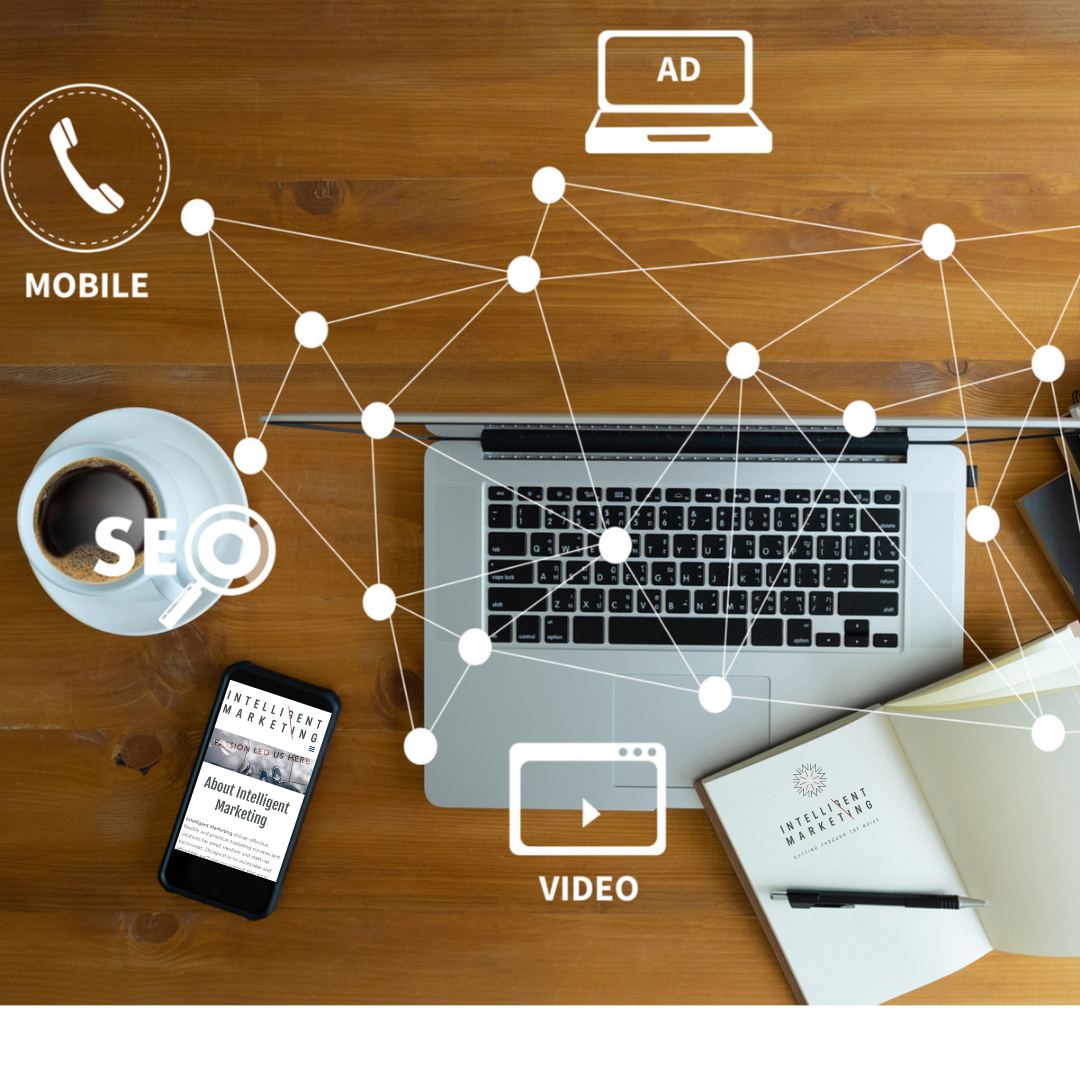What Is Digital Marketing?
At a very high level, digital marketing encompasses all activities that are delivered through electronic devices and digital channels. This includes search engines, websites, social media, email, and mobile apps. Businesses need to leverage digital channels to connect with current and prospective customers.
You might be surprised to know that the number of people using the internet continues to grow at a phenomenal rate every year. The number of internet users worldwide was 3.58 billion in 2017 according to Statista. We know that the way people shop and buy has changed considerably, with the internet being the start of their research and buying journey, whatever the product or service.
That means that your marketing activities need to connect to your audience in the right place at the right time. In other words, you need to meet them where they are spending their time: on the internet
Does Digital Marketing work for all businesses?
Digital marketing can work for any business in any industry. Regardless of what your company sells, digital marketing will work for you, but you need to invest time in creating a profile or buyer personas. You need to identify what your target audience needs, and creating valuable online content that is relevant to them and to your business.
What are the benefits of Digital Marketing?
Digital marketing activities allow you to more accurately assess the results of your activities in real time. If you’ve ever put an advert in a publication, you’ll know how difficult it is to estimate how many people actually flipped to that page and paid attention to your advert. There’s no sure way to know if that ad was responsible for any sales at all.
On the other hand, with digital marketing, you can measure the return on investment (ROI) of pretty much any aspect of your marketing efforts.
Here are seven digital marketing activities you should consider using to reach your prospective customers.
1. Website and Search Engine Optimization
Simply put, search engine optimization (SEO) is the process of optimizing the content, technical set-up, and reach of your website so that your pages appear at the top of a search engine result for a specific set of keyword terms.
Ultimately, the goal is to attract visitors to your website when they search for products, services, or information related to your business. But this alone is not enough, you need to keep them on your website. Most visitors leave a website in under 15 seconds, which means you have very little time to engage with your website visitor.
You need a well-constructed and easy-to-use website, with engaging content that’s relevant to your target audience. You need to make sure that your site is user friendly when it’s viewed on all devices, from desk top to mobile.

addicted to our phones
Some facts to consider:
- 71% of search traffic clicks goes to the first page of google results
- 81% of people perform some type of online research before making a large purchase
This means that you need to pay attention to your SERP (Search Engine Results Page) ranking. This is the position of your website in search results for specific keyword queries.
2. Content Marketing
I’m sure you’ve heard the expression, “content is king”. Great content is the fuel that drives your digital marketing activities, but its even more important than that, it drives your lead generation process and thus your sales
- It’s a key pillar to your Search Engine Optimizations (SEO)
- It helps you get noticed on social media, which builds awareness of your brand, products and services, and also drives traffic to your website
- It delivers value to customers and prospective customers
- It provides value for emails and paid search ads
Creating strong content that is of value to your target audience that is not promotional is not easy to achieve. Content that educates, delivers value for the reader, is useful and inspires is tough but it’s well worth the effort. Offering content that is relevant to your audience helps them see you as a valuable source of information, which means your business is more memorable to them. You want to engage them so they will come back again to read content you have shared.
- 47% of consumers view 3-5 pieces of content created by a company before talking to a sales person from that company
3. Paid Search
Paid search requires an investment of budget as this is advertising, but it can be relatively inexpensive and scalable. It typically refers to the ‘sponsored result’ you see on the top of a search engine results page (SERP). It’s designed to connect your ads with searchers actively seeking what your business provides and aid you in reaching your target audience faster.
Some of the smartest paid search activities are pay per click (PPC) campaigns. The logic behind them is that you bid for ad placement in a search engine’s sponsored links for keywords related to your business, then you pay the search engine a small fee for each click.
- You only pay when your ad is clicked; this is the pay per click (PPC)
- You can tailor your PPC ad to appear when specific search terms are entered, creating ads that target your particular audience
- They aid in achieving a top sponsored result on search engine results page (SERP) i.e.being on the first page of a search
- PPC ads are flexible, as you can run them for limited periods and time them for specific times of day, in specific locations. They are also contextual advertisements; ads that appear when a person is searching for a particular keyword or term.
4. Social Media Marketing
This allows you to promote your brand and your content on social media channels to increase brand awareness, drive visitors to your website, and generate leads for your business. The social media channels you can use are endless and not all will be relevant to your business, but here are some to consider using:
- LinkedIn (read more)
- Snapchat
- Google+
Every day people are watching videos and posting selfies on social media. Many people rely on social networks to discover, research, and educate themselves about a brand, a product or service before engaging with an organization.

Social Media
It’s not enough to simply just post on your LinkedIn, Facebook and Twitter accounts. You must weave social elements into every aspect of your marketing. The more your audience wants to engage with your content, the more likely it is that they will want to share it. This ultimately contributes to them engaging with your business and is more likely to lead to them becoming a customer.
5. Email Marketing
Email has been around for more than two decades, and it’s still one of the quickest and most direct ways to reach potential customers and communicate with them. With the introduction of GDPR (General Data Protection Regulation) has come a new set of rules about capturing and using data, but that doesn’t prevent you from doing email marketing.
Consumers are very attached to their emails. Just ask yourself how many times you have checked your email today. Successful email campaigns must be engaging, relevant, informative, and entertaining. They are often used to promote content, discounts and events, as well as directing people to your business’s website. The types of emails you might send include:
- Blog or newsletter subscription
- Follow-up emails to website visitors who downloaded something or completed a form
- Customer welcome emails
- promotions to loyalty program members.
- Tips, check lists, white papers or similar series emails for nurturing your potential customers
6. Mobile Marketing
Mobile devices are an increasingly integral part of our everyday lives with the average person in the UK spending more than one day a week online. Britons are now so addicted to them that they check them every 12 minutes according to recent research. A report produced by Ofcom, A Decade of Digital Dependency says that 40% of adults look at their phone within five minutes of waking up, increasing to65% for those under 35 years of age.

mobile marketing
This makes mobile marketing increasingly important in reaching and engaging with your future customers. It means that its essential to optimize your digital ads, web pages, social media images and other digital assets for mobile devices. Any one engaging with your business online needs to have the same positive experience, whatever device they are using
There are many ways to market on mobile devices from SMS (short message service) to MMS (multimedia messaging service) to in-app marketing, so finding the right method for your particular business is key.
7. Marketing Automation
Marketing automation refers to the software that serves to automate your marketing operations. Today automation software can be utilised for much more than just marketing activities. There are some free options, plus the entry cost to this type of software has been reducing, making it considerably more accessible, whatever size of business you are. They are fantastic for automating repetitive tasks and reporting, such as:
- Email newsletters
- Social media post scheduling.
- Contact list updating
- Lead-nurturing workflows
- Campaign tracking and reporting
Marketing automation software will help you streamline and automate your marketing tasks and activities. It will help you create workflows to assist with your nurturing and lead generations processes helping you grow revenue faster. You can also integrate your social media to give you greater visibility and analyse results and performance.
More importantly, it measures the results and ROI of your digital campaigns, helping you make decisions on where to put your time and efforts. It will give you the metrics needed to understand the impact of your digital marketing’s impact to the bottom line.
Ready to Talk about intelligent Digital Marketing?







